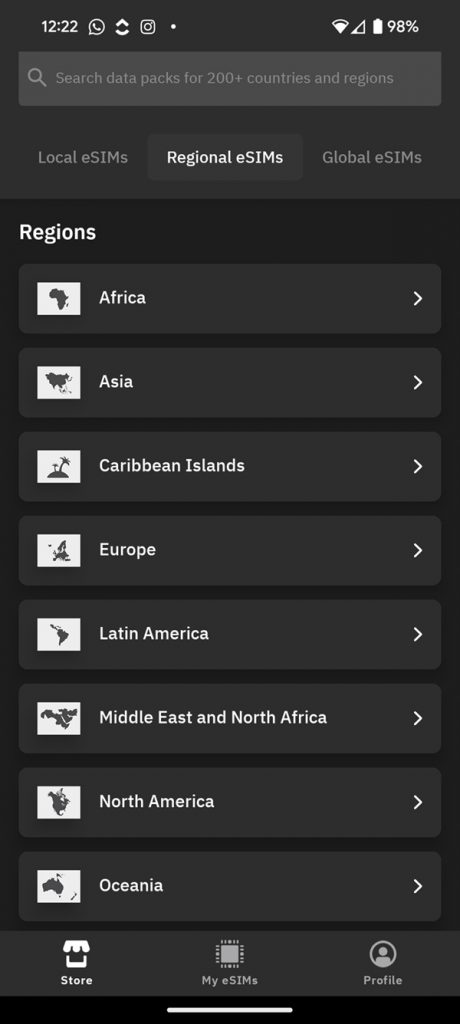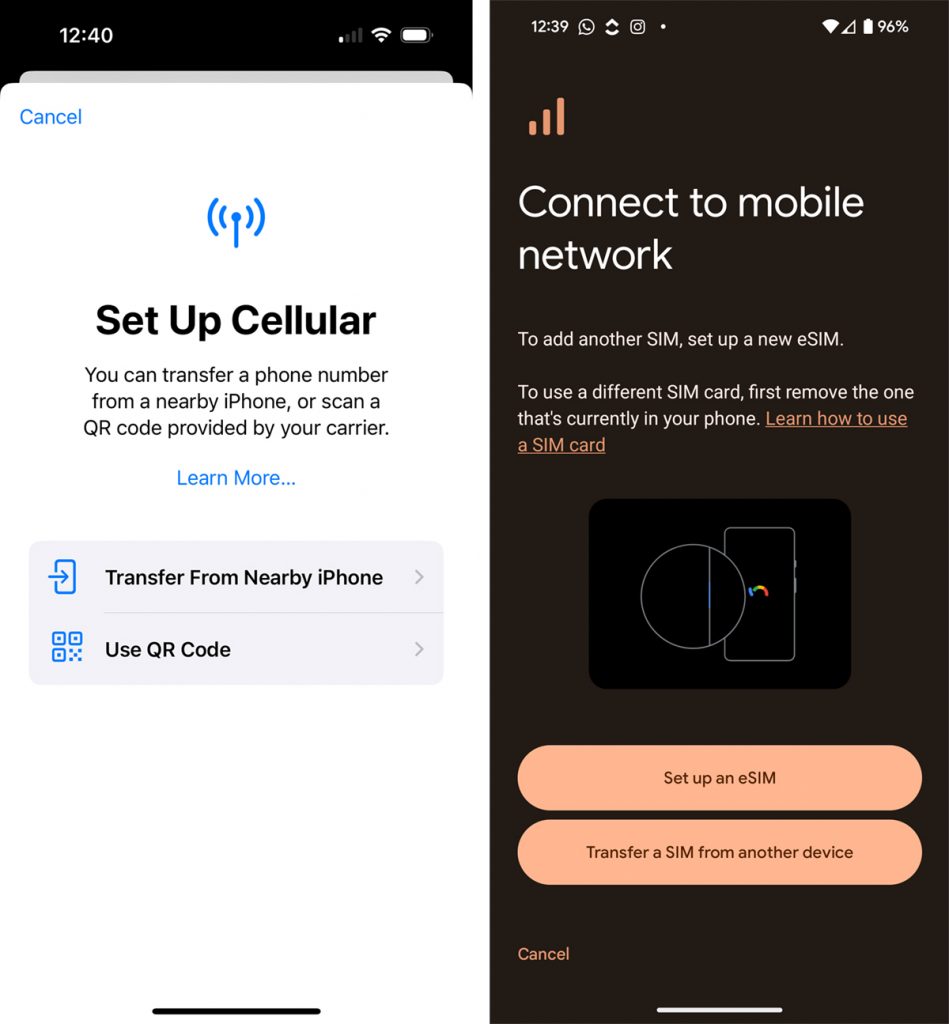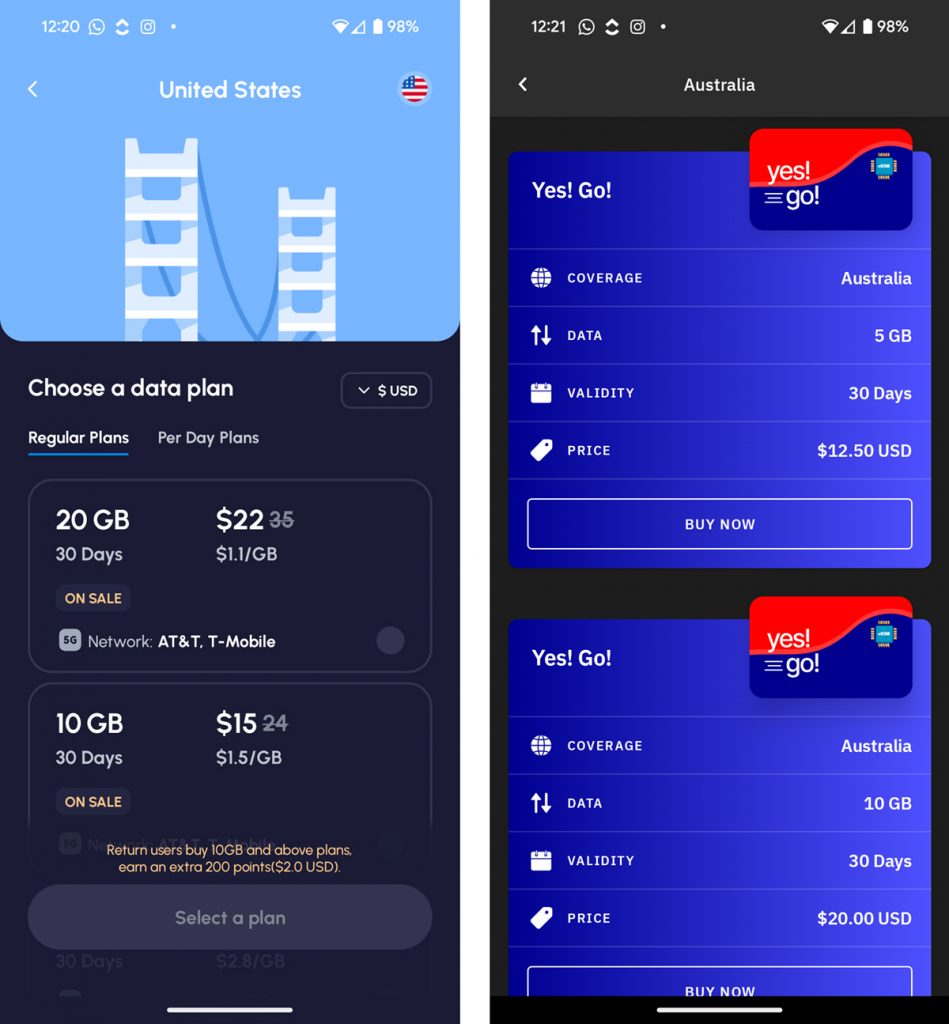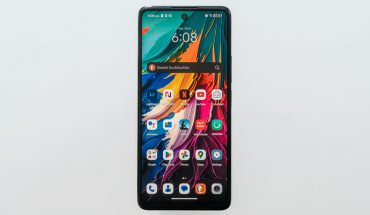An eSIM, or “Embedded” SIM, could save you a lot of money from roaming charges while travelling internationally. Especially when you do the math and realize that you pay pennies on the dollar for each megabyte of data you ultimately use.
Smartphone plans in Canada are already expensive, as it is, but when you add roaming charges to the mix, monthly bills have a ballooning effect. A weekend trip to the United States with a carrier’s roaming plan could cost you an extra $35-$40, while a two-week trip overseas to Europe or Asia could run you another $210 on top of your regular bill.
While convenient because they don’t require any real changes or adjustments on your part, a roaming plan is ultimately an unnecessary expense. With an eSIM, you can potentially slash it by as much as 80-90% over the same time period. Here’s how it works.
What’s an eSIM?
In the past, you’d have to either line up to get a local SIM card at the destination airport or find one at a local merchant wherever you were visiting. Or you could keep one you originally purchased on a previous trip and load it up with service and data on a prepaid plan upon another visit. The advantage in doing that was you were no different than a local consumer. Make calls and use data as you wish, only you’d have a local phone number, so you couldn’t receive SMS text messages or calls to your Canadian number.
An eSIM is basically like having a SIM card built-in to the phone. And you can buy it before even packing your bags. You don’t even need to remove your existing SIM card from your own carrier because an eSIM can work in tandem with the card. Since an eSIM is little more than an embedded chip running on software, it doesn’t require physical media to work. The only caveat is whether or not the phone itself supports the feature.
At this point, every iPhone (since the XS) and most Samsung, Google and OnePlus Android phones going back several years include the capability. The only thing stopping you beyond that is if your phone has some sort of network lock, which isn’t legal for phones sold in Canada anymore, or if the phone just doesn’t have the feature at all. You may run into that problem with phones from foreign brands (Xiaomi, Oppo, Honor, Vivo, Nubia) that don’t have a retail or carrier presence in Canada. Even so, global versions of those phones often support eSIMs.
If you’re not sure (on Android), go to Settings > Network & Internet and see if there’s an option for eSIMs available. Another clue is to look for what’s called an EID (Embedded Identity Document Number), which is the serial number for your device’s eSIM.
eSIMs are primarily data-only but you can certainly find talk, text and data ones as well. When you install a data-only one, you don’t get a local phone number, you get a data plan based on how much bandwidth you’ve purchased. Different providers offer varying plans and prices based on which country you’re visiting. For example, 10GB of data active for 30 days could cost between $15-$24 USD. For China or much of Western Europe, that could be as low as $12. Even converting to the Canadian dollar makes these options considerably cheaper compared to carrier roaming plans.
Where to get an eSIM
 The good news is more and more providers keep popping up to make this a competitive market. Many also have their own mobile apps to simplify both the purchase and installation on your phone.
The good news is more and more providers keep popping up to make this a competitive market. Many also have their own mobile apps to simplify both the purchase and installation on your phone.
Airalo, Nomad, aloSIM, Saily, Jetpac Global, KnowRoaming and Holafly are but a few of the growing number of choices. Others, like Canadian provider Always Mobile facilitate everything through their website. Either way, they provide the instructions on how to install and activate an eSIM on your phone. That could include reading a QR code on your computer or copying and pasting an alphanumeric code into a form to initiate the install.
You don’t have to be tech-savvy to figure it out. It’s mostly an automated process, though you do have to manually turn on the eSIM after it’s installed to get it connected to the local network at your destination.
Generally, the process works like this: You buy a plan and install the eSIM. Before you take off, activate the plan through the provider’s app. Then turn the eSIM on and toggle on both data and roaming for that eSIM only. What will happen is the phone will ask if you want the eSIM to be the primary for data, while leaving your carrier’s SIM as the primary for talk and text. Tap to agree and you have a hybrid situation going on while travelling.
Mind you, if you choose to go with an eSIM that gives you talk, text and data, then your carrier SIM can either stay active in the background or lay dormant depending on what you prefer.
Staying in touch
Here’s the kicker for a hybrid setup: You won’t incur roaming fees if someone sends you an SMS text message or calls you (but you don’t answer). You will, however, if you send someone an SMS or call anyone outside of a Wi-Fi connection. Wi-Fi Calling is important here because it allows you to make calls to anyone back home when your phone is connected to a Wi-Fi network. Same with answering incoming calls while on Wi-Fi. That feature works the same as it does at home, even if you’re on the other side of the world. But since it’s your Canadian number, it doesn’t apply if you make or take a call from someone who lives outside of Canada.
In short, a single errant outgoing text message triggers roaming, putting you on the hook for $12 or $15 without warning. To avoid that, it’s best to use messaging apps like WhatsApp, Telegram and Signal to stay in touch since those are data-only. iOS users can make use of iMessage, even if it’s a data-only eSIM. Just follow the provided instructions to set that up properly in Settings and avoid green bubbles on either side.
FaceTime, WhatsApp and other communication apps are also great for both audio and video calls, making it easier to both stay in touch while also avoiding roaming fees associated with your Canadian phone number abroad.
Saving money over time
Paying $12-$15 per day is exorbitant by comparison. That’s money coming out of your travel budget better spent on experiencing new places. Consider, for example, a 20GB plan from Airalo for the U.S. that costs $42 USD. That’s roughly $55-$60 CAD depending on the exchange rate. Pricey, perhaps, at an average of $3 per GB, but also a fraction of the hundreds Rogers, Bell or Telus would charge for the same trip. Freedom Mobile is much better in that it offers Canada-U.S.-Mexico plans but the catch is the lower monthly cost is usually for a limited stretch.
The “Big 3” carriers always promote their roaming services as liberating experiences for travellers who needn’t worry when they just use their phones (and tablets or connected wearables) as if they were still home. The irony is that the fixed costs are like shackles because they pull from your existing data bucket, whereas an eSIM gives you a separate one to use.
Moreover, eSIMs don’t restrict features like hotspots, so you can utilize the data plan you buy to connect other devices when you need them. Plus, while public and free Wi-Fi networks are convenient, they aren’t as secure as sticking to an eSIM’s data.
If you travel as often as I do, the cumulative savings are enormous — probably enough to buy a flight somewhere. The beauty of eSIM providers is they try to cover as much ground as possible. Some support up to 190 countries, including special packages for digital nomads or expats who need service for six months or a full year. That makes it even easier to prepare for travelling to multiple countries in one trip. It’s not hard to find an eSIM package that covers Europe or Southeast Asia, for instance, but it’s also not difficult to install multiple eSIMs for different countries.
Phones will usually let you store as many as eight different eSIMs. Leave them in place and you can top up anytime you go back to visit again. While it’s not as straightforward to transfer an eSIM when switching to a new phone, providers can walk you through the process to get it done. The easiest way to make sure is to transfer contents between the two phones, which isn’t hard to do for iOS or Android. Worst case, you would need to delete it from the old phone and then reinstall it on the new one.
Ready to go
eSIMs have been more impactful for travel than many realize. Affordable plans with excellent coverage and service are great for the simple fact they take the stress out of staying in touch without breaking the bank. Try one out and you may never go back to paying your carrier another penny anytime you leave the country.





